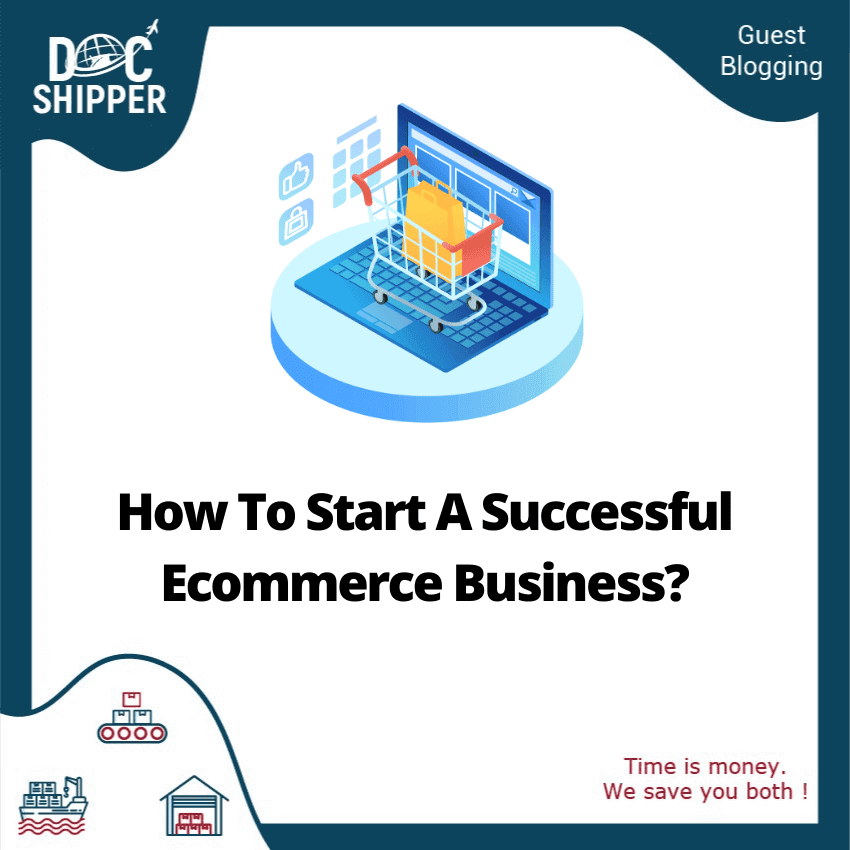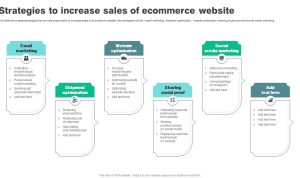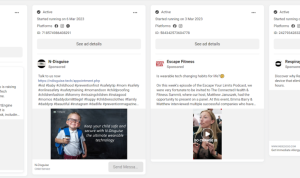How to Start a Successful E-commerce Business is a journey that many aspiring entrepreneurs embark on, filled with opportunities and challenges alike. Navigating the digital marketplace requires not only a solid understanding of various e-commerce models but also the ability to analyze market trends, select the right products, and implement effective marketing strategies. This comprehensive guide aims to equip you with the essential knowledge and tools to establish a thriving online business.
The world of e-commerce is ever-evolving, and understanding the nuances behind successful operations is key. From identifying your target audience to mastering logistics and customer retention, each aspect plays a crucial role in building a brand that resonates with consumers. Whether you’re just starting out or looking to refine your existing business model, this guide will lay the groundwork for your e-commerce success.
Understanding E-commerce Business Models
E-commerce has transformed the way businesses operate, providing various models to cater to different market needs. Understanding these models is essential for anyone looking to establish a successful online business. Each model presents unique advantages, challenges, and opportunities, making it crucial to choose the one that aligns with your business goals.
B2C (Business to Consumer)
The B2C model involves businesses selling products or services directly to individual consumers. This is perhaps the most recognizable e-commerce model, often seen in online retail stores.
- Advantages:
- Direct access to consumers, allowing for better branding and customer relationships.
- Potential for high sales volume due to a larger target market.
- Flexibility in marketing strategies, including social media and online ads.
- Disadvantages:
- High competition from other retailers can lead to price wars.
- Customer acquisition costs can be significant.
- Constant need for inventory management and fulfillment strategies.
- Examples:
- Amazon – A leading online retail giant that offers a vast range of products to consumers.
- Shopify – A platform that enables small businesses to create their own online stores.
- Zalando – An online fashion retailer connecting consumers with a variety of clothing brands.
B2B (Business to Business)
In the B2B model, transactions occur between businesses rather than between a business and individual consumers. This model is typically characterized by larger order sizes and longer sales cycles.
- Advantages:
- Higher transaction values can lead to greater revenue per sale.
- Long-term customer relationships are common, offering recurring revenue opportunities.
- Less price sensitivity compared to B2C due to the value of business relationships.
- Disadvantages:
- Sales cycles can be lengthy, impacting cash flow.
- Marketing is often more complex and requires a targeted approach.
- Dependence on fewer clients can be risky if one or two major clients leave.
- Examples:
- Alibaba – A marketplace connecting manufacturers with businesses globally.
- Salesforce – Provides customer relationship management (CRM) solutions for businesses.
- Grainger – An industrial supply company selling products to other businesses.
C2C (Consumer to Consumer)
The C2C model enables consumers to sell products and services to other consumers, often facilitated by online platforms. This model has gained traction with the rise of peer-to-peer marketplaces.
- Advantages:
- Low overhead costs since the platform facilitates transactions.
- Users can monetize unused items and connect with local buyers.
- Fosters a sense of community among users.
- Disadvantages:
- Quality and reliability can vary widely between sellers.
- Platform fees can cut into profits for sellers.
- Lack of control over the customer experience.
- Examples:
- eBay – A platform where individuals can buy and sell used and new goods.
- Facebook Marketplace – Allows users to sell items locally within their community.
- Etsy – A marketplace for handmade and vintage goods directly from creators to consumers.
C2B (Consumer to Business)
In the C2B model, individuals offer products or services to businesses. This reverse model empowers consumers who can leverage their skills or products to contribute to a business’s needs.
- Advantages:
- Flexibility for consumers to set their pricing and terms.
- Businesses can access a wider range of talents and services.
- Encourages innovation and diverse ideas from consumers.
- Disadvantages:
- Businesses may struggle to vet quality and reliability.
- Consumer contributions can be inconsistent.
- Market saturation can lead to decreased profitability.
- Examples:
- Upwork – A platform where freelancers offer their services to businesses.
- Fiverr – Allows individuals to sell their skills and services to companies or individuals.
- 99designs – A marketplace connecting designers with businesses seeking creative work.
Market Research and Analysis
Effective market research is crucial for the success of any e-commerce business. By understanding the market landscape, businesses can identify opportunities, mitigate risks, and align their strategies with customer needs. This section will delve into essential elements of market research, methods to analyze target audiences, and a checklist to assess competitive dynamics in the e-commerce space.
Key Elements of Effective Market Research
Several key elements define successful market research, which include identifying your target market, understanding industry trends, and evaluating customer behavior.
- Target Market Identification: Clearly define who your potential customers are based on age, gender, location, and shopping habits.
- Industry Trends: Stay informed about the latest trends in your industry, such as shifts in consumer preferences and emerging technologies.
- Customer Behavior Analysis: Observe how consumers interact with your product offerings and competitors, including their purchasing patterns and feedback.
- Data Collection Methods: Utilize both qualitative and quantitative approaches to gather comprehensive insights, such as surveys, focus groups, and analytics tools.
- SWOT Analysis: Conduct a SWOT analysis to identify your business’s strengths, weaknesses, opportunities, and threats in the market.
Analyzing Target Audience Demographics and Preferences
Understanding your target audience’s demographics and preferences is vital for tailored marketing strategies. Various methods are effective for gathering this information.
- Surveys and Feedback Forms: Deploy surveys to gather direct feedback from customers regarding their preferences, habits, and demographics.
- Social Media Analytics: Utilize analytics tools provided by platforms like Facebook and Instagram to gain insights into user demographics, interests, and engagement levels.
- Website Analytics: Leverage tools like Google Analytics to monitor visitor behavior, demographics, and traffic sources, informing you about your audience’s preferences.
- Market Reports: Review industry-specific reports from sources like Statista or Nielsen to gain an overview of market trends and consumer behavior.
- Competitive Analysis: Analyze competitors’ customer base and marketing strategies to identify gaps and opportunities for your business.
Competitive Assessment Checklist
Conducting a competitive assessment is essential for positioning your e-commerce business effectively. Below is a checklist to help evaluate your competition.
- Identify Competitors: List out direct and indirect competitors within your niche.
- Analyze Product Offerings: Review their product range, pricing, and unique selling propositions (USPs).
- Evaluate Online Presence: Assess their website design, user experience, and functionality.
- Review Marketing Strategies: Examine their advertising methods, social media engagement, and content marketing tactics.
- Customer Reviews and Feedback: Analyze customer reviews on platforms like Amazon or Trustpilot to uncover strengths and weaknesses.
- Sales Channels: Identify which platforms they utilize for sales (e.g., own website, Amazon, social media). This can provide insights into market trends.
“Market research is the foundation upon which successful e-commerce businesses are built; knowing your audience and competitors is key to thriving in a competitive landscape.”
Building a Business Plan
A solid business plan is the backbone of any successful e-commerce venture. It serves as a roadmap, guiding you through the initial stages of your business and helping you navigate challenges as they arise. A comprehensive business plan Artikels your vision, objectives, market understanding, and financial projections, ensuring you have a clear path to follow.The essential components of an e-commerce business plan can be categorized into several key areas.
Each section plays a crucial role in shaping your business strategy and providing insights into your operational framework. Here are the key components you should include in your business plan:
Essential Components of an E-commerce Business Plan
Creating a thorough business plan involves addressing various facets of your business. Below are some vital sections to include:
- Executive Summary: A brief overview of your business, including your mission statement, products or services, and key success factors.
- Business Description: Detailed insights into your company structure, the industry landscape, and your unique selling points.
- Market Analysis: An assessment of your target market, including size, demographics, trends, and competitive analysis.
- Marketing Strategy: Strategies for reaching your target audience, including pricing, promotions, and distribution channels.
- Operational Plan: Artikel of your operational workflow, including supply chain management, order fulfillment, and customer service.
- Financial Plan: Detailed financial projections, including income statements, cash flow statements, and break-even analysis.
To set realistic goals and objectives, follow a structured approach that ensures alignment with your overall vision. This step-by-step guide is essential for maintaining focus and measuring progress effectively.
Step-by-Step Guide for Setting Realistic Goals and Objectives, How to Start a Successful E-commerce Business
Establishing clear, attainable goals is vital for keeping your business on track. Here’s a simple process to help you set effective objectives:
- Identify your vision: Clearly define what success looks like for your e-commerce business.
- Break down your vision: Divide your long-term vision into smaller, manageable goals that can be achieved over time.
- Use the SMART criteria: Ensure your goals are Specific, Measurable, Achievable, Relevant, and Time-bound.
- Prioritize your goals: Determine which goals are most critical to your business’s immediate success and focus on those first.
- Review and adjust: Regularly assess your progress and be prepared to adjust your goals and strategies as needed.
Financial planning is a crucial aspect of your business strategy, providing insight into the economic viability of your e-commerce venture. Here, we Artikel templates for financial projections and budgeting tailored specifically for e-commerce.
Templates for Financial Projections and Budgeting
Having a solid understanding of your financial landscape helps with informed decision-making. Below are some essential components of financial projections and budgeting relevant to e-commerce:
| Template Component | Description |
|---|---|
| Sales Forecast | Estimate your sales volume based on market research and historical data. Include monthly projections for the first year, considering seasonal trends. |
| Expense Budget | Detail all expected business expenses, including fixed costs (rent, utilities) and variable costs (marketing, shipping). |
| Cash Flow Statement | Track the inflow and outflow of cash to ensure you maintain sufficient liquidity. This should include projections for at least one year. |
| Break-even Analysis | Determine how much revenue you need to cover your costs. This reveals the point at which your business becomes profitable. |
“A business plan is not just a document; it’s a living guide that helps steer your e-commerce journey towards success.”
Choosing the Right E-commerce Platform

Selecting the right e-commerce platform is crucial for the success of your online business. With numerous options available, understanding the unique features, strengths, and limitations of each platform can streamline your decision-making process. The choice you make will impact everything from the user experience to your capacity for growth, so it’s essential to consider various factors before committing.When evaluating e-commerce platforms, key features to consider include ease of use, customization options, payment processing capabilities, scalability, support and resources, and the overall cost.
Each platform offers different functionalities tailored to various business needs, so understanding these aspects can help you choose the right fit for your enterprise.
Comparison of Popular E-commerce Platforms
To facilitate an informed decision, here’s a comparison of three popular e-commerce platforms: Shopify, WooCommerce, and BigCommerce. Below, you’ll find an overview of their main features, along with a pros and cons table for each.
- Shopify: This is a hosted solution ideal for those looking for an all-in-one package. Shopify provides a user-friendly experience with various templates and apps for additional functionality.
- WooCommerce: As a plugin for WordPress, WooCommerce offers extensive flexibility and customization options, making it suitable for those who already have a WordPress site and want greater control over their online store.
- BigCommerce: This platform is known for its strong built-in features and scalability, making it an excellent choice for growing businesses looking to expand their online presence without switching platforms.
| Platform | Pros | Cons |
|---|---|---|
| Shopify |
|
|
| WooCommerce |
|
|
| BigCommerce |
|
|
“Choosing the right e-commerce platform is not just about finding the best features; it’s about aligning those features with your business goals and customer needs.”
Product Selection and Sourcing
Choosing the right products to sell is a cornerstone of your e-commerce success. The products you select should not only align with market demand but also resonate with your brand image and target audience. A thoughtful approach to product selection can significantly impact your profitability and long-term sustainability in the e-commerce landscape.Identifying profitable products involves several critical criteria. First, consider market demand; products that have a consistent or growing interest are more likely to yield sales.
Additionally, evaluate the competition for those products—high competition might imply a saturated market, while low competition could indicate a niche opportunity. Assessing the profit margins is also essential; products with higher margins allow for better pricing flexibility. Finally, focus on trends; utilizing tools like Google Trends or social media platforms can provide insights into what products are gaining attention.
Methods for Sourcing Products
Sourcing products effectively can make or break your e-commerce venture, and various methods are available to entrepreneurs today. Dropshipping and wholesale are two of the most common strategies.Dropshipping allows you to sell products without holding physical inventory. This method involves partnering with a supplier who ships products directly to your customers. The main advantage here is low upfront costs since you only pay for products after you make a sale.
Popular platforms like Oberlo or Spocket can connect you with dropshipping suppliers. However, it’s critical to choose reliable suppliers to ensure timely shipping and quality products.Wholesale, on the other hand, involves purchasing products in bulk at discounted rates, which you then sell at a markup. This method requires more upfront investment but can lead to higher profit margins. When sourcing products wholesale, platforms like Alibaba or ThomasNet can be useful.
Negotiating with Suppliers and Ensuring Product Quality
Negotiation is key when it comes to establishing a fruitful relationship with suppliers. To ensure you secure favorable terms, it’s crucial to prepare before entering negotiations. Research the supplier’s pricing and quality reputation, and be clear about your expectations regarding product quality, lead times, and payment terms.When communicating with suppliers, always be professional and transparent about your needs. A good practice is to discuss minimum order quantities and pricing tiers, which can lead to more favorable terms.
Building a rapport can also go a long way; suppliers are more likely to offer discounts or better terms to partners they trust.Ensuring product quality involves several steps. First, request product samples before committing to large orders. This allows you to inspect the quality firsthand. Additionally, consider implementing quality assurance processes or third-party inspection services to verify that the products meet your standards upon arrival.
A well-structured approach to product selection and sourcing not only enhances your business’s performance but also fosters long-lasting relationships with suppliers and customers alike.
Branding and Website Design: How To Start A Successful E-commerce Business
Creating a strong brand identity and designing an effective e-commerce website are foundational elements that contribute significantly to the success of an e-commerce business. A well-defined brand helps build customer loyalty, while a user-friendly website enhances the shopping experience, leading to higher conversion rates. In this section, we will explore the importance of branding in e-commerce, how to establish a compelling brand identity, and the essential elements of an attractive and functional website.
Importance of Branding in E-commerce
Branding is crucial for distinguishing your e-commerce business from the competition. It encompasses everything from your business name and logo to your messaging and customer interactions. A strong brand identity can evoke emotions, foster trust, and encourage repeat purchases. Brands like Apple and Nike exemplify effective branding, where their logos and overall messaging are instantly recognizable and resonate with their target audiences.
Establishing your brand identity involves defining your core values, mission, and the experiences you want to create for your customers. Engaging storytelling is a key tactic that brands use to connect with their audience and convey their unique value proposition.
Guidelines for Designing an Attractive and User-Friendly E-commerce Website
An attractive and user-friendly website is essential in retaining customers and driving sales. A well-designed site should be visually appealing, easy to navigate, and optimized for conversions. Here are some guidelines to consider when designing your e-commerce website:
Visual Hierarchy
Use size, color, and placement to guide visitors’ attention to important elements, such as product offers or call-to-action buttons.
Consistent Branding
Ensure that your branding elements, like colors, fonts, and imagery, are consistent throughout the site to reinforce brand recognition.
High-Quality Images
Use professional, high-resolution images of your products to help customers visualize their purchases. Consider including multiple angles and zoom features.
Clear Call-to-Action
Make your call-to-action buttons (like “Buy Now” or “Add to Cart”) stand out and be easily accessible to encourage conversions.
Essential Website Elements Checklist
When designing your e-commerce website, several essential elements must be in place to ensure a seamless user experience. The following checklist Artikels these critical components:To make sure your website is both functional and appealing, consider the following elements:
Navigation
Ensure that your website has a clear and intuitive navigation structure. Categories should be logically organized, and a search function should be easily accessible.
Checkout Process
Simplify the checkout process by minimizing the number of steps required to complete a purchase. Offer guest checkout options to reduce friction.
Mobile Optimization
Given the increasing use of mobile devices for shopping, ensure that your website is fully responsive and provides an excellent user experience on all screen sizes.
Loading Speed
Optimize images and scripts to improve page loading times. A slow website can lead to high bounce rates and lost sales.
Security Features
Display security badges, use SSL certificates, and ensure that payment processes are secure to build customer trust.Incorporating these elements can significantly enhance the user experience, ultimately leading to higher customer satisfaction and increased sales.
Digital Marketing Strategies
Digital marketing is the cornerstone of a successful e-commerce business, as it allows you to reach a global audience and engage with potential customers more effectively. Various strategies can enhance your online presence, drive traffic to your website, and ultimately increase sales. Understanding how to implement these strategies will help you create a sustainable and thriving e-commerce venture.Different digital marketing strategies can be leveraged to maximize your reach and engagement.
Key methods include Search Engine Optimization (), Pay-Per-Click (PPC) advertising, email marketing, and social media marketing. Each of these strategies plays a vital role in attracting customers and fostering brand loyalty.
Search Engine Optimization ()
is all about optimizing your website to rank higher in search engine results. Good practices lead to increased visibility, which in turn attracts organic traffic. Important aspects of include research, on-page optimization, and backlink building.
Research
Identify and use relevant s that potential customers are likely to search for.
On-Page Optimization
Optimize title tags, meta descriptions, and content to ensure relevance to the identified s.
Backlink Building
Establish connections with reputable sites to create backlinks, which enhance your site’s authority.
Effective can result in a significant increase in organic traffic, which is often more sustainable than paid traffic.
Pay-Per-Click (PPC) Advertising
PPC advertising allows you to place ads on search engines and pay only when a potential customer clicks on your ad. This method offers immediate visibility and can be highly targeted based on demographics, interests, and behavior.
Google Ads
One of the most popular platforms for PPC, where you can create text ads that appear in search results.
Retargeting Ads
Show ads to users who have previously visited your site, reminding them to return and complete their purchase.
PPC can yield substantial ROI with the right targeting and ad strategy, allowing for rapid traffic generation.
Email Marketing
Email marketing remains one of the most effective ways to engage with customers and drive conversions. Collecting email addresses should be a priority, as it allows you to send targeted promotions and personalized content directly to your audience.
Newsletters
Regularly updated emails sent to subscribers, featuring promotions, new products, and valuable content.
Triggered Emails
Automated emails based on user behavior, such as abandoned cart reminders or post-purchase follow-ups.
Email marketing has an impressive ROI, often cited as $42 for every $1 spent, making it a key component of any marketing strategy.
Social Media Marketing
Social media platforms provide an excellent opportunity for brand building and customer engagement. Effective use of these platforms can create a loyal community around your brand.
Content Marketing
Share engaging content that resonates with your target audience, including product showcases, user-generated content, and promotional offers.
Paid Advertising
Utilize social media ads to reach a larger audience, targeting specific demographics to maximize relevance and effectiveness.
Social media can amplify your reach and foster customer loyalty, making it a must-have in your marketing toolbox.
Creating an Effective Marketing Plan and Budget
An effective marketing plan should Artikel your objectives, strategies, and the channels you will use to reach your audience. A successful budget is essential for allocating resources effectively.
Define Goals
Establish clear, measurable objectives, such as increasing website traffic by 30% in three months.
Allocate Budget
Based on your goals, allocate funds to various strategies—considering the potential ROI of each channel.A marketing budget should also account for tools and resources needed for analytics, social media management, and content creation.
Implementation Timeline and Success Measurement
A well-structured timeline is crucial for launching and managing marketing campaigns efficiently.
Planning Phase
Devote initial weeks to research, strategy formulation, and content creation.
Launch Phase
Roll out your campaigns over a predetermined schedule, ensuring consistent execution across channels.
Review Phase
Set specific intervals for measuring campaign success, adjusting strategies based on performance data.Measuring success involves analyzing key performance indicators (KPIs) such as traffic growth, conversion rates, and customer engagement metrics. Regularly reviewing these metrics can help optimize your marketing efforts for maximum impact.
Customer Service and Retention
Providing exceptional customer service is crucial for the success of any e-commerce business. In a digital environment, where face-to-face interactions are limited, the quality of customer service can significantly impact a customer’s experience and their likelihood of returning. Businesses that prioritize effective communication, prompt responses, and personalized interactions tend to foster customer loyalty and drive repeat purchases.To ensure a satisfying customer experience, e-commerce businesses should adopt best practices that enhance customer service.
These practices not only resolve issues but also create a positive impression, encouraging customers to remain loyal. Below are some effective strategies for building customer loyalty and promoting repeat business.
Best Practices for Exceptional Customer Service
Adopting effective customer service strategies is essential for cultivating a strong relationship with customers. The following strategies can help improve customer satisfaction and retention:
- Implement Multichannel Support: Offer various communication channels such as email, live chat, social media, and phone support to accommodate customer preferences.
- Respond Promptly: Aim to acknowledge and respond to customer inquiries within 24 hours. Quick responses can alleviate concerns and build trust.
- Personalize Interactions: Use customer data to personalize communication, making customers feel valued and enhancing their shopping experience.
- Train Support Staff: Ensure that customer service representatives are well-trained and equipped with product knowledge and problem-solving skills.
- Solicit Feedback: Regularly ask for customer feedback through surveys and reviews to understand their needs and areas for improvement.
- Resolve Issues Efficiently: Address customer complaints swiftly and effectively to turn a potentially negative experience into a positive one.
Building customer loyalty is not just about one-time purchases; it involves creating an ongoing relationship with your customers. Here are strategies that encourage repeat purchases:
Strategies for Customer Loyalty and Repeat Purchases
Establishing a loyal customer base can be achieved through various methods that incentivize repeat business:
- Offer Loyalty Programs: Create rewards systems that provide points or discounts for repeat purchases, encouraging customers to return for future transactions.
- Deliver Exceptional Quality: Consistently provide high-quality products that meet customer expectations, leading to word-of-mouth referrals.
- Engage Through Email Marketing: Utilize personalized email campaigns to keep customers informed about promotions, new products, and special events.
- Utilize Retargeting Ads: Implement retargeting strategies to remind customers of products they viewed but did not purchase, enticing them to come back.
- Provide Exclusive Offers: Offer special discounts or promotions exclusively for returning customers to show appreciation for their loyalty.
To measure customer satisfaction effectively, e-commerce businesses can track several key performance indicators (KPIs). The following table Artikels important KPIs that help gauge the effectiveness of customer service efforts:
| KPI | Description | Importance |
|---|---|---|
| Customer Satisfaction Score (CSAT) | A metric that measures the contentment of customers after an interaction. | Indicates how well customer needs are being met. |
| Net Promoter Score (NPS) | Measures customer loyalty by asking how likely customers are to recommend the business to others. | Helps assess overall customer sentiment and loyalty. |
| Customer Retention Rate | The percentage of customers who make repeat purchases over a specified period. | Reflects the effectiveness of customer loyalty strategies. |
| Average Response Time | The average time taken to respond to customer inquiries. | Indicates the responsiveness and efficiency of customer service. |
| Return Rate | The percentage of products returned by customers. | Can highlight product satisfaction and quality issues. |
Logistics and Fulfillment
Effective logistics and fulfillment are critical components of any successful e-commerce business. These processes ensure that the right products reach customers on time, impacting customer satisfaction and loyalty. A well-organized logistics operation can streamline your supply chain and enhance your overall business efficiency.Inventory management plays a central role in logistics, involving the tracking of stock levels, orders, sales, and deliveries.
Properly managing your inventory helps minimize costs while meeting customer demand. Shipping is another vital aspect, where selecting reliable carriers can significantly affect delivery times and customer experience. Returns also need to be addressed; having a clear return process can build trust and offer customers reassurance when purchasing online.
Options for Fulfillment Services
Choosing between in-house and third-party logistics (3PL) services is crucial for your e-commerce operations. Each option has its advantages and disadvantages, and understanding these can help you make the best choice for your business model.In-house fulfillment allows for greater control over inventory and shipping processes. Businesses can tailor their logistics to meet specific needs, potentially resulting in better customer service.
However, this option requires more upfront investment in warehousing, staffing, and technology.Conversely, third-party logistics providers can offer scalable solutions and expert services without the need for significant investment. They often have established networks that facilitate faster shipping and better rates. However, using a 3PL means relinquishing some control over the fulfillment process and may involve additional fees.Here’s a concise comparison of both options:
| Aspect | In-House Fulfillment | Third-Party Logistics (3PL) |
|---|---|---|
| Control | High | Medium |
| Initial Investment | High | Low |
| Scalability | Low | High |
| Expertise | Requires development | Access to experienced professionals |
“The logistics strategy a business chooses can define not only its operational efficiency but also its long-term sustainability in the competitive e-commerce landscape.”
Order Fulfillment Process Flowchart
To visualize the order fulfillment process, consider the following steps from order placement to delivery:
1. Order Placement
The customer places an order through the website.
2. Order Confirmation
An automated confirmation email is sent to the customer.
3. Inventory Check
The system checks inventory levels to ensure the product is available.
4. Order Processing
The order is processed in the system for fulfillment.
5. Picking and Packing
Warehouse staff picks the items from the shelves and packs them.
6. Shipping
The packaged order is handed over to the shipping carrier.
7. Delivery
The order is delivered to the customer’s address.
8. Returns (if necessary)
In case of returns, the customer initiates the return process, and the product is sent back to the warehouse.Each of these steps is interconnected, and optimizing each phase can lead to a more efficient logistics system that enhances customer satisfaction and operational performance.
Analyzing Business Performance
Understanding the performance of your e-commerce business is crucial for sustained growth and profitability. By tracking key metrics, you can make informed decisions that enhance customer satisfaction and drive sales. A systematic approach to analyzing business performance enables you to identify strengths, weaknesses, and opportunities for improvement.
Key Metrics for E-commerce Success
Tracking the right metrics is essential for gauging the success of your e-commerce business. These metrics provide insights into various aspects of your operation, from sales to customer engagement.
- Sales Revenue: This is the total income generated from sales, a primary indicator of business health.
- Conversion Rate: The percentage of visitors to your site who make a purchase. A higher conversion rate indicates effective sales strategies.
- Average Order Value (AOV): This measures the average amount spent by customers per transaction. Increasing AOV can significantly boost revenue.
- Customer Lifetime Value (CLV): The total revenue a business can expect from a single customer over their lifetime. Higher CLV suggests better customer retention and loyalty.
- Cart Abandonment Rate: The percentage of shoppers who add items to their cart but do not complete the purchase. Reducing this rate can directly impact sales.
Tools for Tracking Performance
Utilizing the right tools and software can streamline the process of tracking and analyzing your e-commerce performance. Here are some effective options:
- Google Analytics: Offers comprehensive data on website traffic, user behavior, and conversion tracking.
- Shopify Analytics: Provides insights specific to Shopify stores, including sales data, customer demographics, and product performance.
- Klaviyo: A marketing automation tool that tracks customer engagement and offers detailed analytics on email marketing performance.
- Crazy Egg: Uses heatmaps to visualize user interactions on your site, helping identify areas for improvement.
- Tableau: A powerful data visualization tool that can help you analyze complex data sets and share insights easily.
Performance Reporting Template
Organizing your data into a structured reporting template can facilitate regular assessments of business performance. A well-designed report should include key metrics, trends, and actionable insights. Below is a sample template for a monthly performance report:
| Metric | This Month | Last Month | Change (%) |
|---|---|---|---|
| Sales Revenue | $20,000 | $18,000 | +11.11% |
| Conversion Rate | 2.5% | 2.3% | +8.70% |
| Average Order Value | $80 | $75 | +6.67% |
| Cart Abandonment Rate | 65% | 68% | -4.41% |
By utilizing such a reporting template, e-commerce businesses can easily compare performance over time, make data-driven decisions, and implement strategies aimed at improving overall business outcomes.





